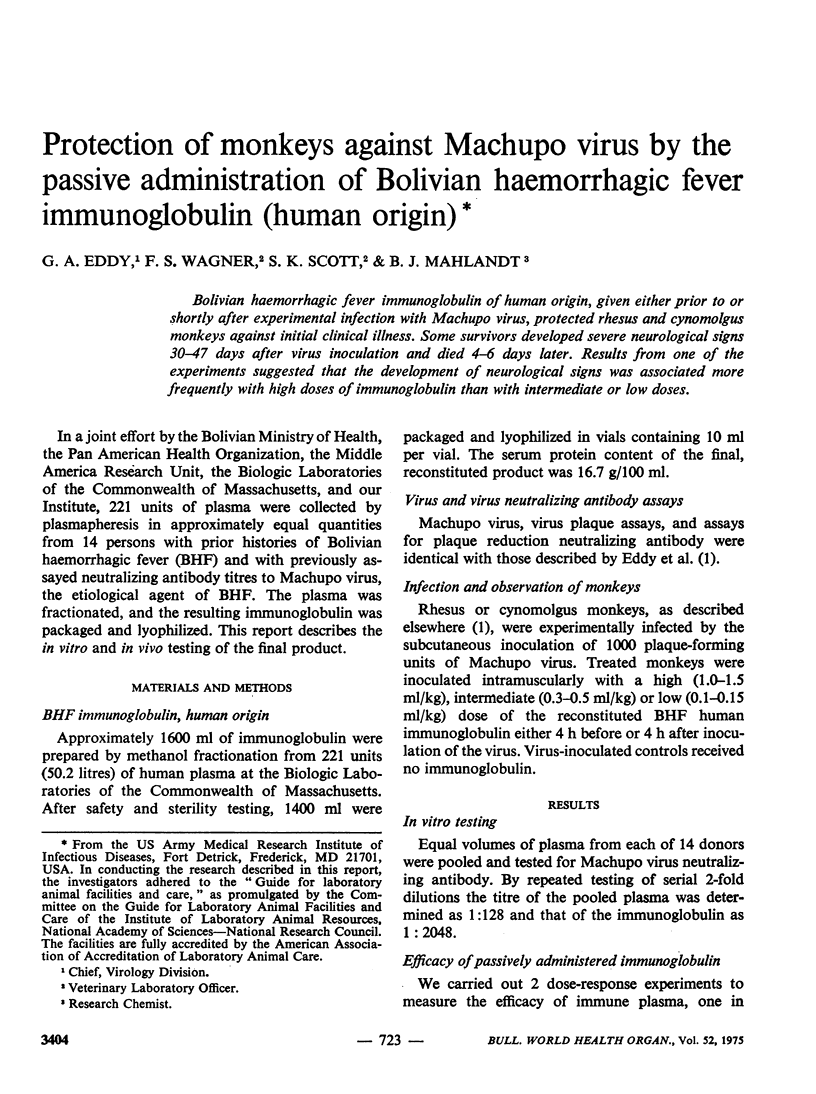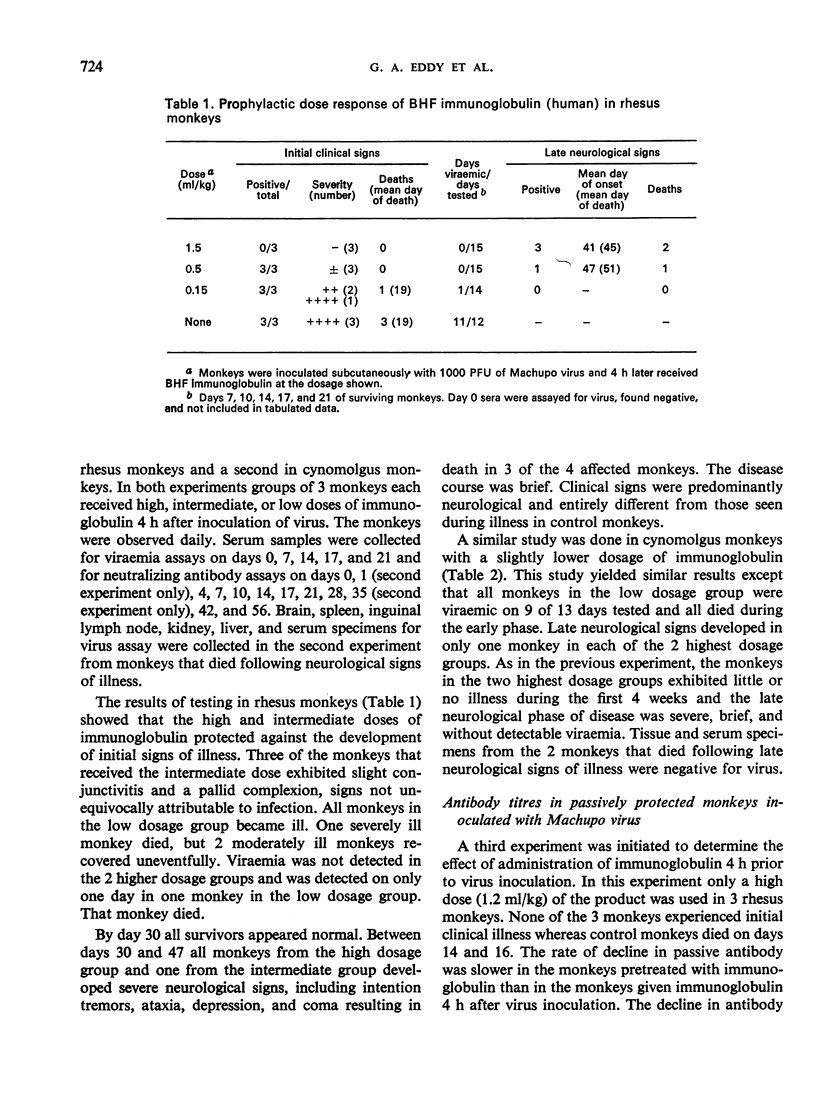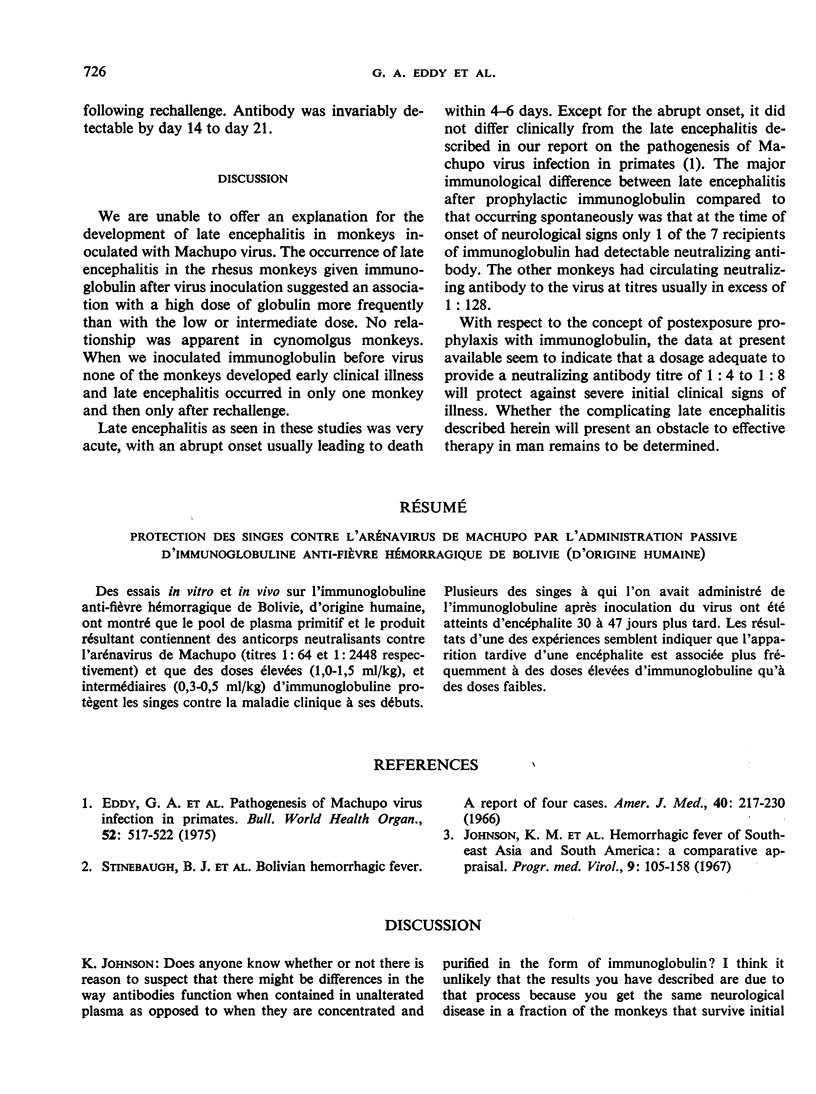Abstract
Bolivian haemorrhagic fever immunoglobulin of human origin, given either prior to or shortly after experimental infection with Machupo virus, protected rhesus and cynomolgus monkeys against initial clinical illness. Some survivors developed severe neurological signs 30-47 days after virus inoculation and died 4-6 days later. Results from one of the experiments suggested that the development of neurological signs was associated more frequently with high doses of immunoglobulin than with intermediate or low doses.
Full text
PDF




Selected References
These references are in PubMed. This may not be the complete list of references from this article.
- Eddy G. A., Scott S. K., Wagner F. S., Brand O. M. Pathogenesis of Machupo virus infection in primates. Bull World Health Organ. 1975;52(4-6):517–521. [PMC free article] [PubMed] [Google Scholar]
- Johnson K. M., Halstead S. B., Cohen S. N. Hemorrhagic fevers of Southeast Asia and South America: a comparative appraisal. Prog Med Virol. 1967;9:105–158. [PubMed] [Google Scholar]
- Stinebaugh B. J., Schloeder F. X., Johnson K. M., Mackenzie R. B., Entwisle G., De Alba E. Bolivian hemorrhagic fever. A report of four cases. Am J Med. 1966 Feb;40(2):217–230. doi: 10.1016/0002-9343(66)90103-3. [DOI] [PubMed] [Google Scholar]


